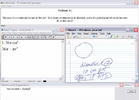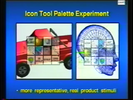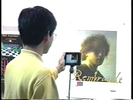










In this paper, we present a methodology for recognizing seatedpostures using data from pressure sensors installed on a chair.Information about seated postures could be used to help avoidadverse effects of sitting for long periods of time or to predictseated activities for a human-computer interface. Our system designdisplays accurate near-real-time classification performance on datafrom subjects on which the posture recognition system was nottrained by using a set of carefully designed, subject-invariantsignal features. By using a near-optimal sensor placement strategy,we keep the number of required sensors low thereby reducing costand computational complexity. We evaluated the performance of ourtechnology using a series of empirical methods including (1)cross-validation (classification accuracy of 87% for ten posturesusing data from 31 sensors), and (2) a physical deployment of oursystem (78% classification accuracy using data from 19sensors).



In this paper, we present a methodology for recognizing seatedpostures using data from pressure sensors installed on a chair.Information about seated postures could be used to help avoidadverse effects of sitting for long periods of time or to predictseated activities for a human-computer interface. Our system designdisplays accurate near-real-time classification performance on datafrom subjects on which the posture recognition system was nottrained by using a set of carefully designed, subject-invariantsignal features. By using a near-optimal sensor placement strategy,we keep the number of required sensors low thereby reducing costand computational complexity. We evaluated the performance of ourtechnology using a series of empirical methods including (1)cross-validation (classification accuracy of 87% for ten posturesusing data from 31 sensors), and (2) a physical deployment of oursystem (78% classification accuracy using data from 19sensors).




We introduce a new type of interactive surface technology based on a switchable projection screen which can be made diffuse or clear under electronic control. The screen can be continuously switched between these two states so quickly that the change is imperceptible to the human eye. It is then possible to rear-project what is perceived as a stable image onto the display surface, when the screen is in fact transparent for half the time. The clear periods may be used to project a second, different image through the display onto objects held above the surface. At the same time, a camera mounted behind the screen can see out into the environment. We explore some of the possibilities this type of screen technology affords, allowing surface computing interactions to extend 'beyond the display'. We present a single self-contained system that combines these off-screen interactions with more typical multi-touch and tangible surface interactions. We describe the technical challenges in realizing our system, with the aim of allowing others to experiment with these new forms of interactive surfaces.



